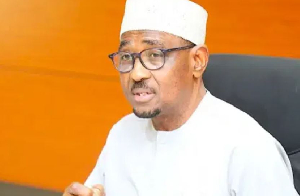Access to electricity supply across the country has witnessed a decline over the past three years, according to an analysis by the Institute for Energy Security (IES).
According to the findings, the reduction was from an average of 2.7 percent between 2010 to 2016 to 0.6 percent for the period.
Additional findings in the research conducted by the IES showed that at the end of the year 2000, access to the electricity supply remained at 45 percent. This represented a yearly average growth rate of around 2 percent.
The IES explained that the decade ending 2010 indicated Ghana had achieved an access rate of 67 percent – indicating an annual average growth rate of 2.2 percent from 2000.
Ghana over the past three decades has witnessed electricity access that averaged more than 2 percent growth until 2017 – when it fell below 1 percent and has since slowed the total growth of electricity access for the past three years.
“Had the country maintained just the annual rate of roughly 2.7 percent, the electricity access rate would have been somewhere around 94 percent today – comparable to other countries outside the sub-Saharan African and Asian band,” Nana Amoasi VII, Executive Director of IES told the B&FT in an interview.
“Driven by growth in demographic requirements, increased urbanisation with an ever-increasing technological demand, and the aspiration to transform into a middle-income country, Ghana in 1989 devoted itself to a 30-year National Electrification Scheme (NES) to achieve universal access to reliable electricity supply by 2020,” Nana Amoasi VII is quoted by the B&FT.
He continued, “But 31 years after the policy was instituted, there still exists a substantial deficit for electricity access in Ghana. The current electrification rate is about 85 percent – a bit far off the target with no improvement in sight.”
Business News of Thursday, 5 November 2020
Source: www.ghanaweb.com
Access to electricity witnesses decline over the past three years – IES research
 Ghana over the past three decades has witnessed electricity access that averaged more than 2% growth
Ghana over the past three decades has witnessed electricity access that averaged more than 2% growth












